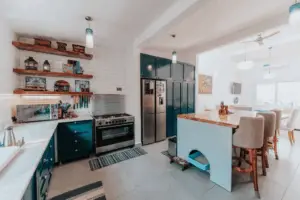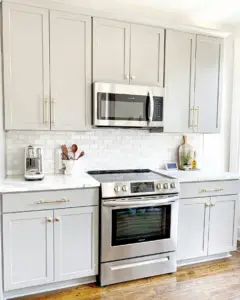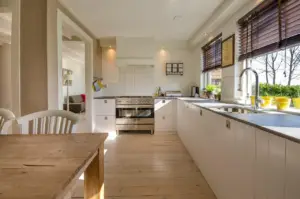by George House/27,June,2025
Spills, dirt, and footprint are some of the things that floors encounter daily. For these reasons, choosing the right flooring is crucial for ensuring safety and durability. So, a better choice would be the non-slip ceramic tiles, which reduce the chances of slipping even in wet or crowded areas.
This article discusses how these non-slip ceramic tiles improve cleanliness and safety while helping maintain the place it used longer. So, keep learning!

1) What Are Non-Slip floor Tiles?
“Non–slip floor tiles are a type of clay-based tile ( usually hardened and coated with a protective layer to make it strong and look nice). They allow you to walk without any danger of slipping when the floor is wet.”
Slipping occurs, for instance, when there is low grip between your foot and the floor, sort of like attempting to walk on ice, which happens because the ice is too smooth. Scientists call this low friction.
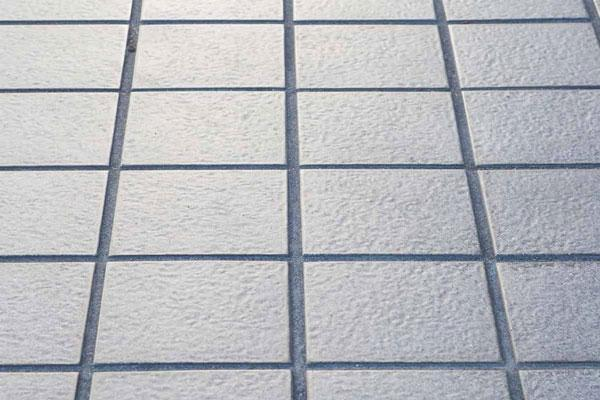
However, non-slip floor tiles have something called a higher coefficient of friction, or CoF, which means better grip. Manufacturers make non-slip tiles rough or add tiny texture, or sprinkle some sand on them. Some tiles also have a matte finish to offer elegance and roughness at the same time.
2) Understanding the R-Rating System: How Safe Are Your Tiles?
The R rating system measures scientifically how slippery a floor tile can be when walked on. Actually, “R” means “ramp” since the test is done while people walk on a heated oil-covered surface that slowly tilts just like a ramp.
Then the person is allowed to walk while wearing shoes and walk until they begin to slide. The amount of tilt before slipping occurs determines the specific R-rating value assigned.

Its value ranges from R9 to R13, and the increasing number indicates reduced slipperiness of the tile, thereby providing better grip and safety. Let’s discuss the tiles’ slip resistance rating in detail!
| Slip Resistance Level | Tilt Angle Range | Where It’s Used | |
| R9 | Low | 6°–10 | Dry indoor spaces (living room, Bedroom, offices) |
| R10 | Medium | 10°–19 | Corridors, waiting rooms, light-traffic zones |
| R11 | High | 19°–27° | Restrooms, kitchens, balcony |
| R12 | Very High | 27°–35° | School kitchens, labs, and gardens |
| R13 | Extremely High | Over 35° | Industrial zones, swimming pool edges |
3) Key Benefits of Non-Slip floor Tiles
With the constant activity taking place across floors, it’s critical to select flooring that meets safety, strength and design requirements. So, let’s have a quick look at the advantages of ceramic tile slip resistance to help make wise decisions!
+ Prevent Slips and Falls: As discussed earlier, non-slip ceramic tiles increase friction with shoe soles, which makes slipping harder, especially in wet places like restrooms, entrances or cafeterias. Actually, the textured surface or anti-slip coating on the ceramic tiles lessens the chances of falling.
+ Strong and Durable for Everyday Use: Moreover, the heating of clay at high temperatures creates non-slip ceramic tiles, thus making them hard, dense and resistant to wear. Thus, best suited for public or outdoor area as they do not break or chip under harsh conditions such as moving heavy furniture, foot traffic, or objects frequently dropped.
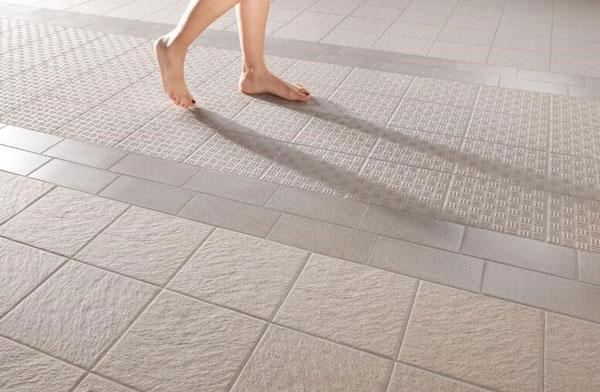
+ Simple to Clean and Maintain: Furthermore, the surface of these tiles is sealed, making them resistant to absorbing water, dirt, or spills. As such, they can be cleaned with basic tools and non-toxic chemicals.
+ Hygienic and Resistant to Germs: Non-slip tiles also tend to resist mold growth since they won’t absorb water, bacteria, or mildew. Thus, their low porosity (ability to absorb moisture) makes them perfect for sustaining hygienic conditions in wet floors, especially bathrooms and kitchens.
+ Economic Over Time: Spending a little bit more on non-slip ceramic tiles pays off in the long run, as they outlast many other floor types. Additionally, their durability and safety translate to fewer repairs needed, less cleaning effort required, and decreased accidents.
+ Stylish Choices to Match Your Design: Such tiles not only ensure safety but also come in different colors, textures, and patterns. Whether your space wishes to have a fun colorful look or prefer a calm and clean style there are tiles to match which in turn aid to the look of non-slip tiles a pleasant environment.
4) How to Choose the Right Non-Slip Tiles ?
While choosing non-slip ceramic tiles, you need to take into account various factors, which I’m going to discuss in this section. So be with us!
Understand the R-Rating for Safety: Above all, evaluate the tile slip rating since it measures its resistance to slippage. An R9 rating is acceptable for dry areas like classrooms.
However, non-slip tiles for bathrooms or other wet areas should have an R11 or even an R13 rating. A higher slip coefficient for tiles means safer flooring even in wet areas.
Select the Right Surface Finish and Color: Moreover, keep in mind that matte tiles are better because they help your shoes grip the floor. However, glossy tiles may be appealing, but should not be selected because they may cause slipping.
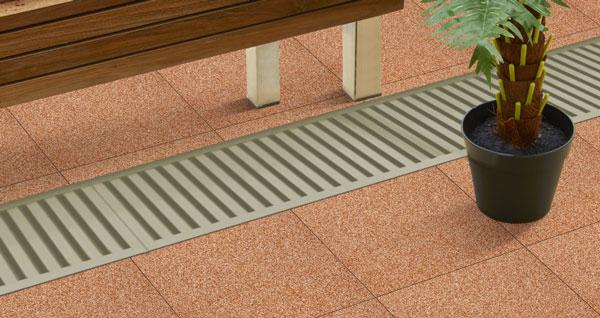
Consider Tile Size and Edge Design: In addition, consider the tile’s dimensions as well. Smaller tiles with more grout lines provide additional friction, helping to stop slips.
Moreover, if we talk about the rounded and textured edges, then they could also promote safety. This is so as, owing to their shape, they aid in averting water flow, thus greatly minimising the chances of slipping.
Look for Safety Certifications: Picking tiles that comply with ASTM (American) or EN (European) standards should be your last consideration. They are like proof that the tile has gone through lab tests.
5) Maintenance and Cleaning Tips for Non-Slip floor Tiles
The public and outdoor area need to take certain steps towards the cleaning and care of non-slip ceramic tiles to keep them safe and increase long-term usage. While strong, these tiles still require some form of maintenance in order to function optimally.
- Daily Mopping and sweeping: The cleaning staff need to conduct daily sweeps to clear dust and coarse dirt that can damage a tile’s surface. To maintain non-slick surfaces, warm water paired with neutral cleaners (non-strong) should always be used after sweeping.
- Try to prevent surface damage: Tough brushes, bleach, or acidic chemicals must be avoided at all costs. This is because they can damage the intricate surface texture on the tile, which provides slip-resistance.
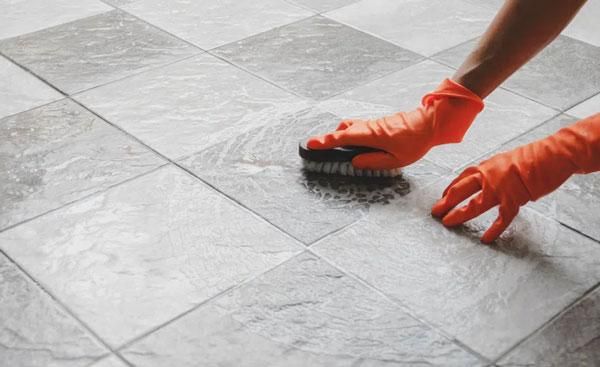
- Gently Erase Tough Stains: In addition, soft scrubbers used with baking soda or specific tile-safe products will gently remove spots and stains. Gentle scrubbing ensures stubborn stains are removed without damaging the tile.
- Routine safety Checks: Finally, you could plan thorough cleaning every month to reveal surfaces that have not been exposed for some time. Moreover, maintenance checks on tile flooring need to be done regularly.
- If needed, slip resistance tests can be performed. Equally important in safety enhancement is the replacement of worn-out tiles.
6) Conclusion
In summary, non-slip ceramic tiles ensure the facilities are safe, clean, and long-lasting. Careful selection of flooring minimize the chances of slipping in wet spaces. Therefore, proper tile choice minimize accidents and maintenance work.
To get trusted quality with a style range, visit George Group, one of China’s leading tile manufacturers and suppliers. We have serviced over 15,000 clients in the past 15 years through our glazed ceramic tiles, weather-resistant antique tiles and many more – all custom to project specifications, including non-slip surfaces.

